Back in September, we were contacted by the Center for Marine Robotics at Woods Hole Oceanographic Institution (WHOI). If you’re not familiar with them, they’re the best of the best when it comes to undersea robotics.
They generously offered to test a few of our thrusters in their test chambers, which are capable of simulating depths of over 11,000 meters, the depth of “Challenger Deep” in the Marianas Trench. We sent them a few thrusters from our second production batch – serial numbers 151, 152, and 153. They recently completed a static depth test. We compared performance and inspected the thrusters before and after the test to see if there were any effects from the pressure.
We’re proud to say that the thrusters did great and showed no signed of degradation or damage after being tested to a depth of 3000 meters – almost two miles underwater!
We want to share the test process and results with you.
The Test
The images below show the test chamber. It’s capable of simulating pressures at 11,000 meter depths where the pressure is more than 1000 times what it is at the surface. The thrusters were put into a mesh bag inside the chamber and then a heavy lid was lowered into place and secured by a screw-on top, seen on the right.
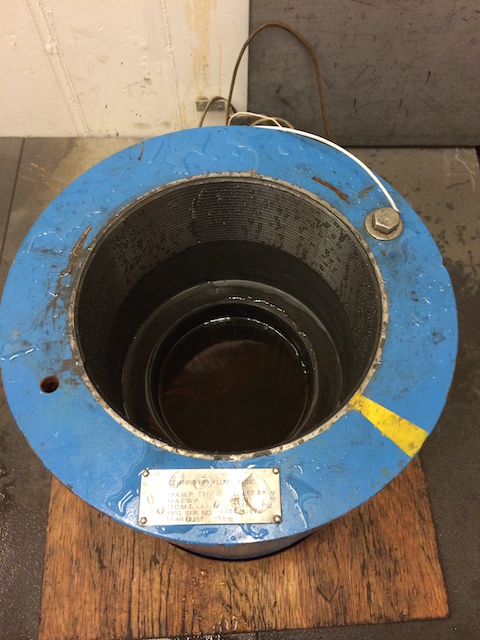
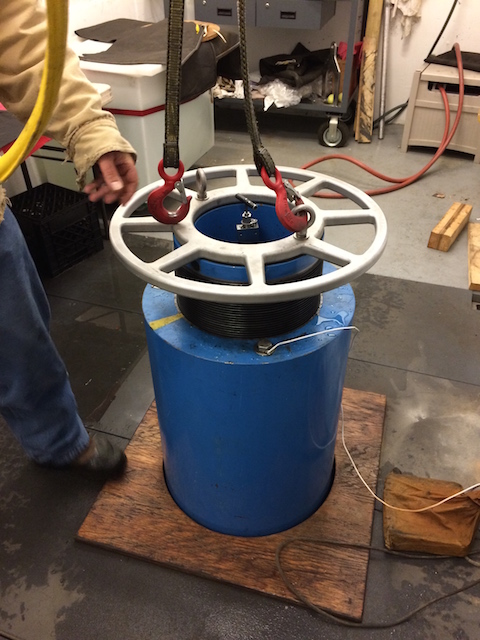
Test chamber. (Image credit: Kevin Ulmer)
The plot below shows the pressure data log from the test. The test was run in three phases, each with two ten minute pressure cycles. All of the thrusters were tested at 100m, two were tested at 1000m, and one was tested at 3000m.
The image below shows all of the thrusters, fresh out of the test chamber. They look brand new!
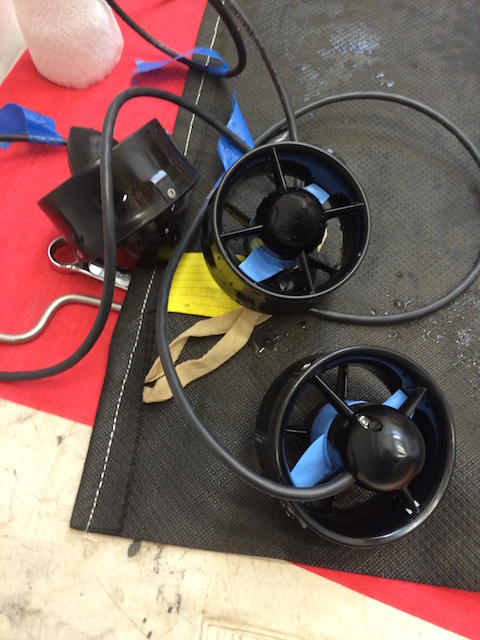
Thrusters after the test. (Image credit: Kevin Ulmer)
Post Test Inspection and Results
The folks at WHOI sent the thrusters back to us for inspection and testing. We ran the same tests on the thrusters before and after the pressure testing to see if there was any variation. For all three thrusters, there was no measurable difference in thrust, power, or efficiency. Additionally, all of the thrusters passed a hipot insulation test before and after.
We disassembled the thrusters to check for any damage inside. Here’s the thruster that was tested to the greatest depth:
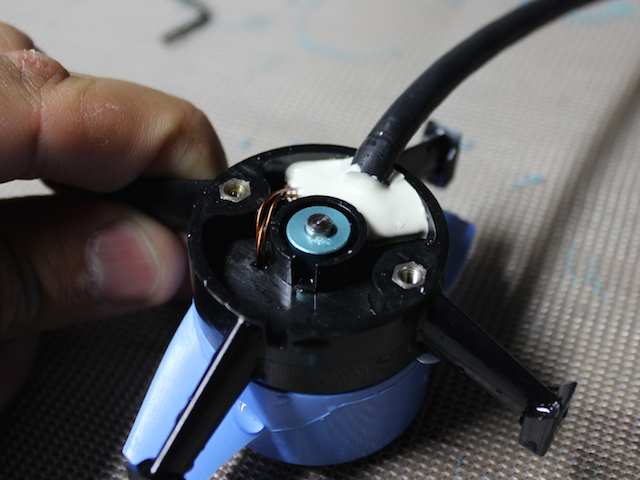
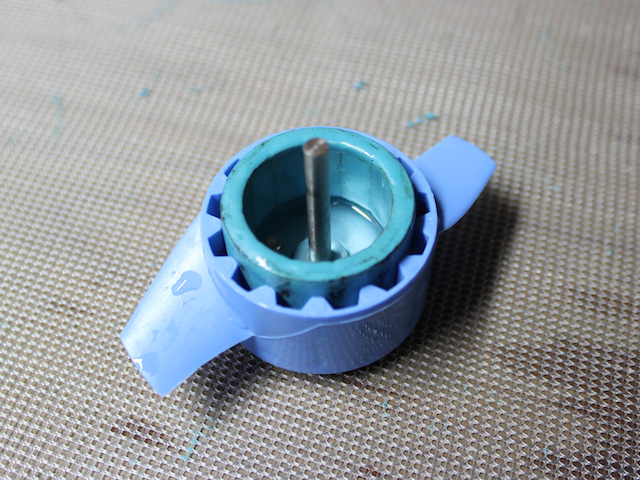
Front cable connection (left) and rotor and propeller (right).
Above on the left is the cable connection at the front of the thruster. The potting held up very well. On the right is the rotor with magnets and propeller. The magnets collected some iron particles, probably from the inside of the test chamber – they wipe right off.
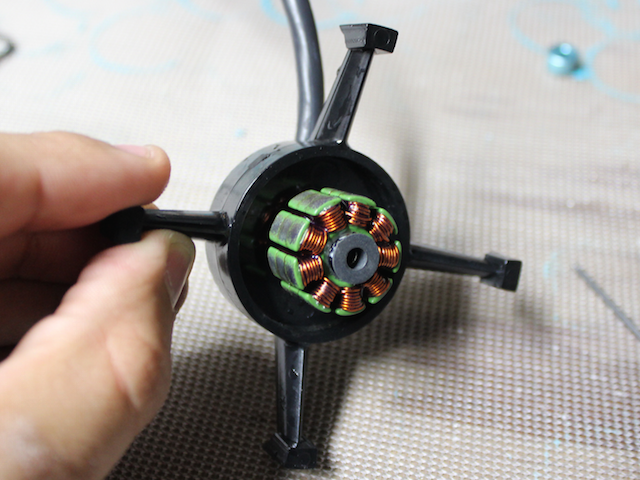
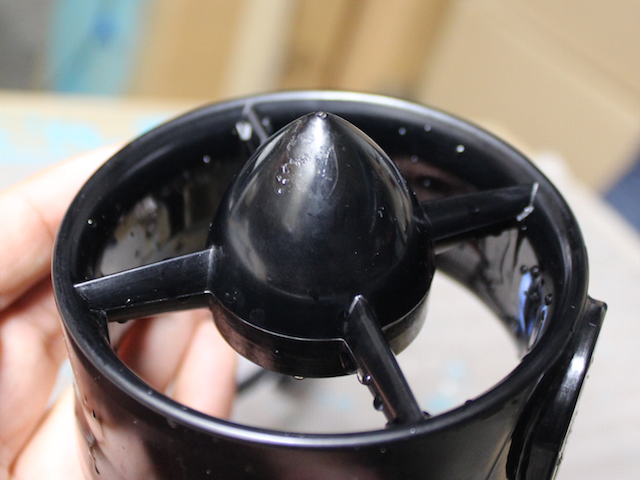
Stator, windings, and bearing (left) and nozzle and tail cone (right).
The stator, windings, and bearing are in excellent shape and look brand new. The tail cone seems to show some slight signs of pitting in the plastic. This was the only noticeable damage at 3000m.
Conclusion
You have to keep in mind that this was a static test – the thrusters weren’t actually running. That said, these are very promising results. What do these depths mean? Here’s what you might find if you use the thrusters to go deep:
- At 100 meters sunlight is significantly reduced. Here you’ll find most commercial fish and marine mammals.
- At 1000 meters is the deepest part of the “twilight zone”. Here you might find deep sea giant squid or angler fish.
- At 3000 meters is the deeper half of the “midnight zone” where you might find gulper eels, black swallowers, and other deep sea oddities.
But really, who knows what you’ll find or discover down there? There is a lot of unknown in the ocean.
What’s Next?
The next step for us is to perform similar tests with the thrusters powered. This is primarily to answer the simple question of “do they run or not?”, but we would also like to check for any variations in performance.
Acknowledgements
We owe a huge thanks to Andy, Dana, Kevin, and everyone else at WHOI who helped to arrange and perform this testing. Please check out the Center for Marine Robotics at WHOI.
Disclaimer: This post shares results of our testing but this is not a “rating” for operation at extreme depths. We’ll have to do more testing before we can say that. Additionally, WHOI generously helped us with this testing but they are not endorsing or qualifying our products.


